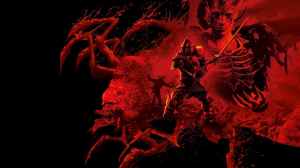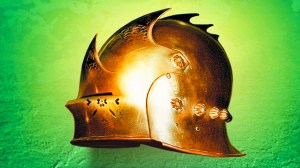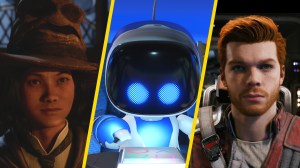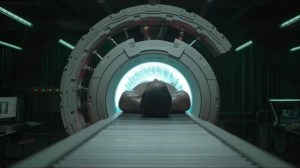When Nintendo and its partners first began to localize the Pokemon franchise in North America, there were already a number of products available in Japan. After all, Pokemon Red and Green had released in the region in February 1996, more than two years before the rest of the world. As a result, some franchise elements were localized before others which was the case for Pokemon: The Electric Tale of Pikachu. The comic series launched in the fall of 1998 at the same time as the anime and Game Boy game. Despite being the first Pokemon comic to arrive in North America, the series has been out of print for years and forgotten by many.
Videos by ComicBook.com
When most Pokemon fans think of comics based on the franchise, their minds immediately jump to Pokemon Adventures. The long-running manga series has covered nearly every mainline Pokemon game and even some spin-offs, too. For some reason, however, Viz and Nintendo initially elected not to adapt that comic in North America. Instead, they chose Pocket Monsters: Dengeki Pikachu, a series written and illustrated by Toshihiro Ono. It’s impossible to say the specific reason the series was selected, but it might have been the slightly more mature tone the series had when compared to its anime counterpart. As such, it would be the perfect way for Viz and Nintendo to introduce the brand to a slightly older audience.
The Electric Tale of Pikachu presented a world similar to the one in the games and cartoons, but with some striking differences. The comic goes out of its way to address several details that are often glossed over in other Pokemon media. For example, Pokemon Trainers are allowed to take a leave of absence from school which addresses why so many 10-year-old kids are rarely seen in classes. New Trainers are also forced to apply for a Pokemon Handler’s license and pass a written exam. The first issue of The Electric Tale of Pikachu smartly uses the exam as a way to introduce the audience to certain Pokemon concepts, such as Poke Balls and evolution. Pokemon battles also had consequences. In one comic, Ash’s enraged Charizard nearly kills an opponent. These details help establish a very different world from the cartoon and video games!

In another contrast with the anime, the comic had a more futuristic feel. The technology in this world seems far more advanced; cars and bikes hover above the ground, and airships are typical methods of travel. In an old interview, Ono claimed he “tried to imagine what the world where Poke Balls had been invented would look like.” At a time when the concept of a Pokemon world wasn’t quite developed, Ono’s approach gave the series its own unique appeal. Ono even changed some of the Pokemon, as well. His interpretation of the Ghost-type Haunter depicted in the image below was like something out of a horror film!
The Electric Tale of Pikachu proved to be a massive success for Viz Comics, at one point billed as “America’s #1 comic.” In the early days of the franchise, the comic inspired a plethora of fan art which was reprinted in the back of each issue. The initial series only lasted four issues, but Viz would publish three additional Pokemon limited series by Ono: Pikachu Shocks Back, Electric Pikachu Boogaloo, and Surf’s Up, Pikachu. The success of The Electric Tale of Pikachu led Viz to adapt a number of additional Pokemon comics, most notably Pokemon Adventures. Ono’s comic was still treated as the real deal, however. In fact, Pokemon Adventures was initially marketed in North America as a comic for younger readers, sold in a taller format with card stock covers resembling a coloring book; it even came with stickers!
In total, 16 issues of Ono’s comic were published, and the last issue stated Ono was moving on to a new series. Alas, the creator wrote and illustrated an adaptation of the movie Mewtwo Strikes Back, but it was never localized, possibly because Viz elected to release a four-issue animation comic based on the film instead. Once the company finished reprinting Ono’s works, Adventures would take over as the “main” Pokemon comic in the region, which it remains to this day. Unfortunately, this has meant that Ono’s works have ended up largely overshadowed.

Ono’s take on the Pokemon world holds up quite well after all these years. There’s a real charm to his interpretations of the source material, and the Pokemon themselves. The series enchanted a generation of Pokemon fans in North America, and it’s long past time new fans were given the same opportunity. Manga purists will also be disappointed to discover that the series was never released in a traditional, Japanese right-to-left format; the comic was mirrored for its English translation.
In an ideal world, these comics would be back in print, and Ono’s adaptation of Mewtwo Strikes Back would come along with them. The artist’s designs would also be perfect for merchandise, as well. Given how many Pokemon products are available from the Pokemon Center online store, it’s not hard to imagine items like backpacks and t-shirts selling well with Ono’s designs on them.
It’s impossible to say for certain why the series is now out of print. Perhaps Ono’s sometimes off-model Pokemon designs don’t fit with the way The Pokemon Company markets the brand these days, or it could just be that some have forgotten how important the series once was to fans such as myself. With the Pokemon franchise now celebrating its 25th anniversary, however, it seems like the perfect time to give the comic a second chance on shelves.
Were you a fan of Pokemon: The Electric Tale of Pikachu? Would you like to see the series back in print? Let us know in the comments or share your thoughts directly on Twitter at @Marcdachamp to talk all things gaming!








